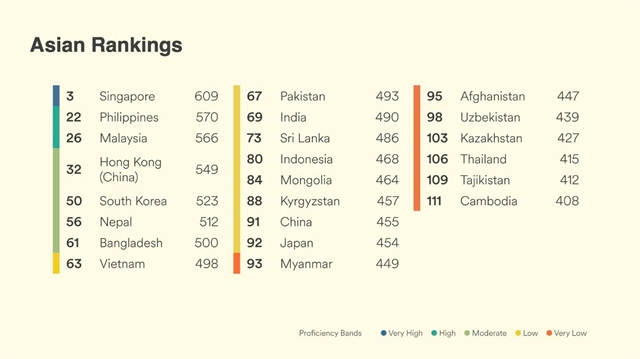 Society
Society

Troubled by low fertility rates in the southern provinces, the Ministry of Health has proposed relaxing the country’s two-child policy in order to allow Vietnamese parents to decide the number of children they want.
 |
| Health staff introduce contraceptive methods to residents of Từ Sơn Township in Bắc Ninh Province. The Ministry of Health has proposed relaxing the country’s two-child policy in order to allow Vietnamese parents to decide the number of children they want.VNA/VNS Photo Dương Ngọc |
HÀ NỘI – Troubled by low fertility rates in the southern provinces, the Ministry of Health has proposed relaxing the country’s two-child policy in order to allow Vietnamese parents to decide the number of children they want.
The proposal was one of three population planning proposals presented by the ministry at the 12th Party Central Committee’s sixth meeting underway in Hà Nội.
The three suggestions, contained in a draft population law, include a differential policy of birth rate flexibly according to regions so that in areas with high fertility rate of three children per woman, families would be encouraged to have fewer than two children whereas in areas where the fertility rate is low, parents would be encouraged to have two children.
The second option would keep in place the two-child policy, which encouraged parents to have only one or two children. The third option would allow parents to decide.
Nguyễn Văn Tân, deputy chief of the ministry’s General Office for Population and Family Planning, said the country has managed to maintain the ideal replacement level fertility of 2.1 children per woman over the past decade. Replacement levels refer to a balance between the number of births and deaths.
Figures from HCM City’s Department of Population and Family Planning show that Việt Nam’s largest city recorded fertility rates of 1.45 children per woman of childbearing age. A low birth rate was also observed in the Mekong Delta region – between 1.5-1.6 children per woman.
If the two-child policy is maintained, and the birth rate is lower than the replacement rate, the country would face a series of problems, including social benefits for the elderly and labour shortages in the next ten years, he said.
If the birth rate drops below a certain level, it would be difficult to increase it, a problem faced by other Asian nations. Tân cited South Korea as an example of a country that maintained a limited birth rate policy until it decided to loosen the policy when the rate dropped to less than 1.6 children per woman in 1996.
However, this rate continued to decline further, reaching 1.08 children per woman in 2005. The government made efforts to encourage childbirth, adopting incentive policies that resulted in an increase up to an average of 1.27 children per woman in 2012.
Some of the participants at the discussion raised concerns of a population boom if the third option is implemented, expressing support for the differentiated regional option.
However, Tân said that based on the experience of other countries, increasing the birth rate in areas with low fertility would be difficult.
The draft population law will be discussed further before the Central Committee plenary session ends on Wednesday. – VNS









